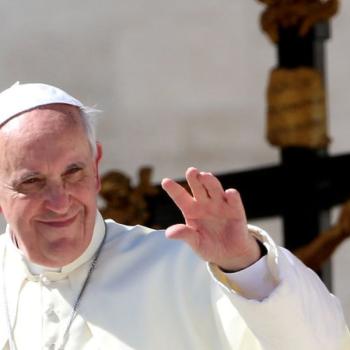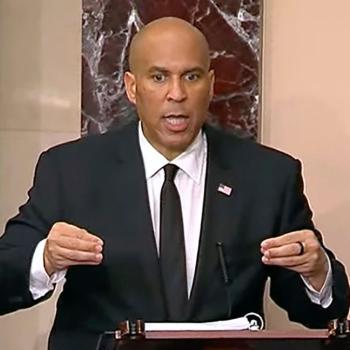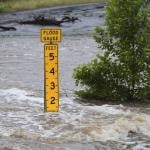Here is a basic form to preach a sermon about climate change that connects with Scripture and your congregation. Sample sermon included.
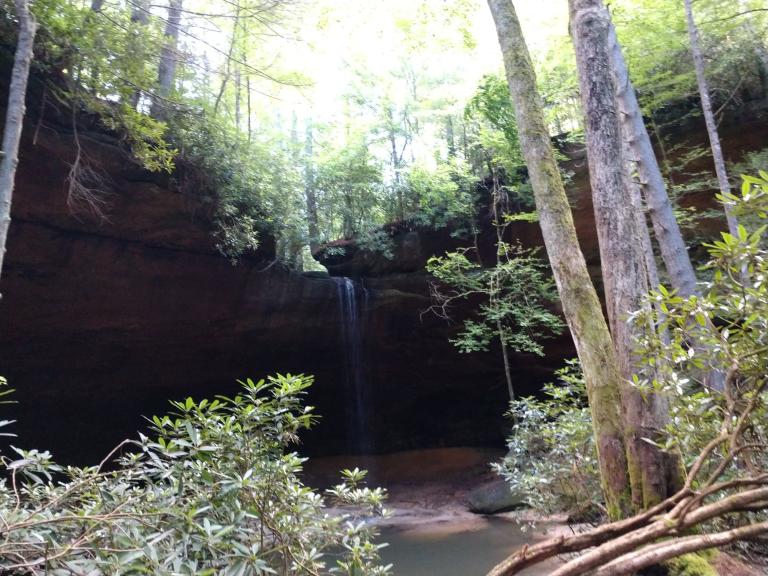
Since the early days of my ministry back in the early 2000s, I’ve been experimenting with how to preach a sermon about climate change and environmental issues. In my book, Creation-Crisis Preaching, I emphasize that it’s important to ground such a sermon in strong biblical and theological foundations as well as connect with your congregation’s context.
Below is a basic outline for how to preach a sermon about climate change and your congregation.
Of course, this is not the only form you can use, and I’ll share other sequences in future posts. But this is an outline that you can adapt to your context and use with any number of Scripture passages. After explaining the outline in more detail, I’ll include excerpts from a sermon I recently preached to illustrate how this sequence can work.
How to Preach a Sermon about Climate Change and Your Congregation: A Basic Sequence
This sequence for a sermon about climate change has three basic components: climate, congregation, and Scripture. You’ll see in the outline below one possible way to order these components.
- CLIMATE
- CONGREGATION
- SCRIPTURE
- CLIMATE
- SCRIPTURE
- CONGREGATION
Let’s took at this outline in more detail.
1 – CLIMATE
Set the scene with a dramatic climate moment (use descriptive language invoking the senses).
2 – CONGREGATION
Transition: What does this have to do with our congregation?
3 – SCRIPTURE
Connect with biblical text, including principles that inform our response to the climate crisis.
4 – CLIMATE
Connect with nature.
Invite listeners to think of a special place in nature.
Share your own story of a sacred encounter with the Divine in nature, the beauty/joy as well as the devastation/heartbreak (use descriptive language invoking the senses).
5 – SCRIPTURE
Connect with a biblical example of telling difficult truths.
Give assurance of God’s presence, power, purpose.
6 – CONGREGATION
Connect to congregation’s mission statement, previous or existing ministries, care for children, and advocacy for the vulnerable to show how acting on climate is an extension of what the church already does and who the congregation understands themselves to be.
Invitation to take concrete steps to address the climate crisis.
Conclusion tying together climate, Scripture, congregation.
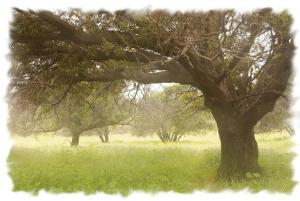
Try experimenting with the sequence
You can reorder the sequence of these components. For example, you could begin with the biblical text and establish important principles. Then you can explain how your congregation already embodies and aspires to those principles in their ministry. After that, you can explain how these principles and the congregation’s ministry can extend to responding to the climate crisis.
The key is telling compelling stories
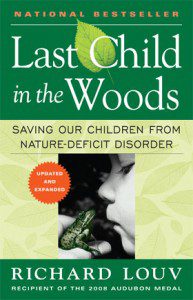
In his book, Last Child in the Woods: Saving Our Children from Nature Deficit Disorder, Richard Louv asserts that “children will not save what they do not love.” In other words, if we want the younger generation to care about this Earth, we need to cultivate a love for nature. But this is not just true for children; it applies to adults as well. People will not save what they do not love.
So, when thinking about how to preach a sermon about climate change and environmental issues, we can use narrative and descriptive language to create a relationship between the listener and the natural world.
Stories make abstract concepts real.
And they create an emotional response that gives people a reason to care. So when you preach a sermon about climate change, tell stories and use illustrations that make God’s Creation come to life for the listeners. These stories can contain difficult truths, but we also need to show how people are working to protect this precious planet we call home. Inspiring people to join efforts already in motion can motivate a congregation to put their faith into action.
Preparing for a sermon on climate change
Below is one example of how to preach a sermon about climate change. On Nov. 20, 2022, I was the guest preacher at First Christian Church in Georgetown, Kentucky. The pastor, Rev. Chris Cash, had told me that the congregation was planning to re-engage in the Green Chalice ministry (the environmental arm of the Disciples of Christ denomination) in the coming months. This grew out of their visioning work for what faithful actions steps they wanted to take in response to their mission statement and congregational values.
So, in consultation with Rev. Cash, I decided to preach a sermon to help the congregation connect Scripture, the climate crisis, and their own congregation in order to build on their core value of “stewardship of the earth.” For this sermon, I drew on ecological exegesis work I had done on two texts:
Malachi 4:1-2 and Luke 21:5-19
You can see the full exegesis in this installment of EcoPreacher 1-2-3: “COP27 – Solidarity, Endurance for Climate Justice: Malachi 4, Luke 21.”
In the sermon below, I’ll include the outline headings and a few explanatory notes along the way.
Sermon Excerpts from “God’s Creation Needs the Church; God’s Church Needs Creation”
- CLIMATE
(Notice the use of descriptive words and vibrant action verbs to describe the climate moment here at the beginning of the sermon.)
The man stood with his hands raised above his head, holding a stone tablet against the vast blue dome of the sky. From this height on Jebel Musa in Egypt, the crowd could see the craggy mountains sprawled out in every direction dappled with morning sunlight and shadow, rising through the mist and low-drifting clouds. This mountain is believed to be the site where Moses stood with the original Ten Commandments.
In that ancient story, Moses comes down from Mt. Sinai and sees the people abandoning God in an orgy of idolatry around the statue of the golden calf. In anger and disgust, Moses smashes the tablet to protest their betrayal of God’s trust and everything that is holy.
On Nov. 13, just last week, Yosef Abramowitz held a different stone tablet made by youth from Strike 4 Future, the Israeli branch of the global youth protest for stopping the climate crisis. On the tablet they had painted the words “Broken Promises” in Hebrew. With representatives from The Sinai Climate Partnership standing as witnesses, Abramowitz called out, “We look down to Sharm el-Sheikh and we’re not satisfied.”
Sharm el-Sheikh is the city in Egypt that hosted COP27.
Have any of you heard of COP27?
It’s the 27th Conference of the Parties to the United Nations Framework Convention on Climate Change, and it took place over a span of two weeks, ending just two days ago. For the last twenty-seven years, representatives from all over the world have gathered to try to stop global warming, and protect vulnerable communities from the effects of the climate crisis, as well as hold polluters responsible for what they have done. This time they gathered at Sharm el-Sheikh to issue an urgent call to the world’s leaders to get this existential crisis under control before it’s too late.

While faith leaders have always been a presence at the COP gatherings, this year a coalition of many different interfaith groups came together to launch an effort encouraging all houses of worship to raise their voices against the destruction of our planet. Their message is that religious communities and religious leaders have a key role to play in bringing about climate justice. And that this work requires deep transformation within society.
- CONGREGATION
(This section is a short transition to make a link to the congregation and ask questions that will bridge listeners to the next section on Scripture)
So, what does Sharm el-Sheikh and Mt. Sinai have to do with a Disciples of Christ congregation 6,000 miles away in Georgetown, Kentucky? Why should First Christian Church care about faith leaders they’ve never met protesting about climate change halfway across the globe? In fact, why should Christians care about the climate crisis at all?
- SCRIPTURE
(This section ties into one of the Scripture passages they heard earlier in the worship service, Malachi 4:1-2. Note the way in which the principles of reverence, integrity, and leading with justice and righteousness are applied to the climate crisis.)
Their message echoes what we heard today in fourth chapter of Malachi. The prophet issues a scathing indictment against religious leaders who forsake their sacred duty to uphold God’s covenant and protect the people in their care. Writing around 420 B.C.E., the prophet condemns the priests who collude with polluting, cheating, and disrespectful leaders. But he commends those who practice reverence, act with integrity, and lead with justice and righteousness. The former will be held accountable for their failure to stand up for what is right, while the latter will experience healing and joy.
This ancient text has implications for faith leaders and congregations today in the context of the global climate crisis.
Will we raise our voices in solidarity with those who are suffering from climate-fueled catastrophic storms, droughts, wildfires, sea-level rise, and agricultural collapse? Or will we remain silent, implicitly condoning the ecocide happening all around us? In Chapter 2, verse 10, the prophet pleads for his community to join together in faith, despite their differences: “Have we not all one father? Has not one God created us? Why then are we faithless to one another, profaning the covenant of our ancestors?”
(In this section, I also talk about the importance of covenant and how it creates ethical obligations – as well as tensions – for humans in their relationship with God and nature. This leads to this bridging section:)
And isn’t this the tension we experience today?
Our relationship with God and nature is even more ruptured than it was in ancient times. Yet, there is also tremendous beauty and profound spiritual connections that we feel in nature.
I’ll bet there is a place in God’s Creation where you have experienced beauty and joy, a place where you feel the presence of God in a special way. Maybe it’s far away from here on a beach or a snowy mountain. Or perhaps it’s in our own state, a place like the Red River Gorge with its stunning views and hiking trails. Maybe it’s one of the beautiful parks here in Georgetown. Or simply your own backyard.
(Notice the attention to place in the previous paragraph. Talking about nearby places that listeners know helps to create recognition and emotional investment.)
What’s the name of this place?
Where is it? What would we see, smell, hear, taste, or touch if we went there? And why do you love this place so much?
As you thought of this place, your mind told you a story about part of God’s Creation. It’s a place that nurtures your faith. I’ll tell you about a place in nature where I have experienced the presence of God right here in Kentucky.
- CLIMATE
(In this section I describe taking my students from Lexington Theological Seminary on an immersion trip to Eastern Kentucky where we hiked the Blanton Forest Preserve on Pine Mountain, near Harlan, Kentucky. In the following paragraph, notice the descriptive language used to create an experience for the listener of being in this worshipful place in nature.)
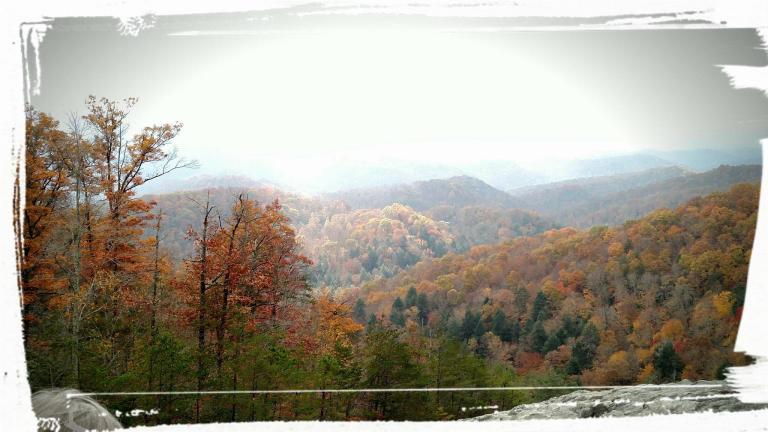
As my students and I walked up the trail, it was as if we were making a pilgrimage into a place of worship. 350-year-old trees arched over us like the vaulted ceiling of a sanctuary. A stream with darting minnows (including some endangered species) flowed down the mountain as we hiked up. The congregants were rocks and boulders robed in lichen. Spiders wove their altar linens. Rhododendrons knelt in prayer. All of them were hushed and reverent.
We knew we were walking on holy ground.
Our guide was telling us about the importance of preserving this forest to create a corridor for migrating animals and birds. And how protecting old growth forests help slow climate change. Then suddenly, thunder clouds began shouldering their way across the sky. In a burst from the grey, billowing clouds, the rain poured down like a drenching baptism right there in the middle of the forest! Back on the bus, we toweled off, laughing and marveling at the timing of it all.
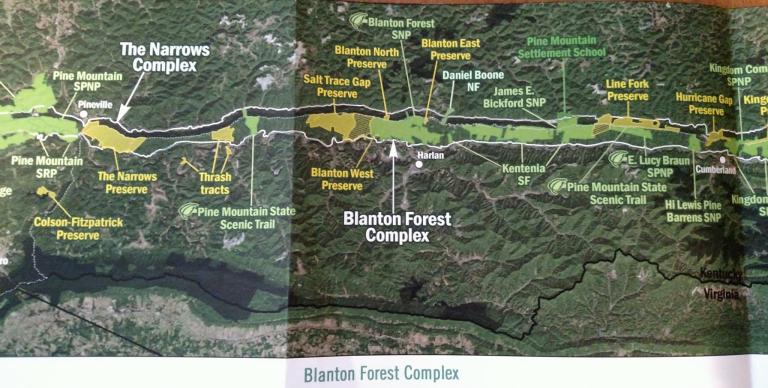
And yet . . .
When we looked at the map of coal mining sites lining the ridge on both sides, it was a grim reminder that the sanctity of this place is hemmed in by relentless human pressure all around. The next day we traveled to places where the mining industry has decimated entire mountains from the topside down and inside out. We saw a documentary about a toxic sludge spill that engulfed 30 miles of the Tug Fork River. And we heard stories of proud coal miners suffering with black lung disease, abandoned by the coal companies just as the mines themselves were abandoned.
We also know that the greenhouse gasses from all that coal burned over the last 200 years has caused air pollution and served as a kind of atmospheric net trapping heat and disrupting the fragile climate.
(Did you notice the juxtaposition between the beauty of the forest and the reality of coal mining? This illustrates the tension between humans, God, and Creation, mentioned earlier in the sermon. This tension will be addressed in the next section by drawing on the second biblical passage read earlier in the service, Luke 21:5-19.)
- SCRIPTURE
(This section begins with another transition to draw the listener back into the sermon with their own observations of climate or environmental devastation. The paragraph after that names the anxiety the listeners are likely feeling by this point and pivots to the Gospel of Luke.)
Maybe you have a story like this, too. Perhaps you have seen a place in nature that you love be destroyed or poisoned. Or you’ve seen pictures of trees ravaged by deforestation, coral reefs bleached by acidic waters.
These are not easy stories to tell.
They are not comfortable to hear. But they are the truth. And our reading from Luke today reminds us that it’s important for us to hear and face difficult truths.
Luke was writing to a church who has already experienced the fall of the temple in Jerusalem after the siege of Rome. The destruction of the Jewish temple was devastating for them because it called into question the goodness and power of God. We might have similar theological angst in the face of planetary ecological collapse.
As we deal with unprecedented environmental and social upheavals, we, too, might question whether God cares and what God is doing, if anything.
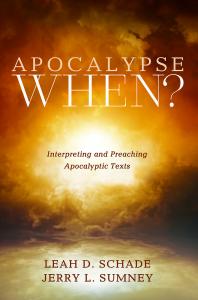
However, as my colleague, Dr. Jerry Sumney says, “believers are to look up in hope and expectation; their salvation is arriving. The announcement of coming judgment is a threat to some because justice will be meted out. But it is a blessing to others, and for the same reason” (Apocalypse When?: A Guide to Interpreting and Preaching Apocalyptic Texts, 79).
This is not to say that the path of faith is easy.
Jesus is clear that those who stand up for justice and righteousness are often persecuted and abused. Faith leaders who have stood against the fossil fuel industry and the U.S. government at Standing Rock Reservation and other public protests, for example, can attest to the travail of being arrested, gassed, tazed, bludgeoned, water-hosed, and assaulted with rubber bullets. Not to mention the vitriol from online trolls, bots, and even relatives and former friends.
Ultimately, however, Jesus’s apocalyptic discourse assures us that there is a power that is greater, longer-lasting, and more effective than the violence we are experiencing and perpetrating against Creation and humanity. It is the power of truth, honesty, discernment, advocating for and protecting the vulnerable. It’s the power of resisting authoritarian oppression and casting a vision for the Realm of God.
This difficult but necessary truth compels us to understand something important.
“God’s Creation Needs the Church; and God’s Church Needs Creation.”
(Notice how these paragraphs mirror the movement of the earlier section of the sermon where principles of the biblical text are applied to the climate crisis. This section ends with the central claim of the sermon: “God’s Creation Needs the Church; and God’s Church Needs Creation.”)
- CONGREGATION
(This is where the central purpose of the sermon comes to the fore, which is to inspire the congregation to put their faith into action by addressing the climate crisis in concrete ways. Notice the appeal to the church’s mission statement and how their own values link to the climate activists in Egypt. This begins to bring the sermon full circle.)
So, I want to invite you, siblings in Christ, who worship in one of the most generous, self-giving congregations in Georgetown, to envision what it means to engage in a ministry of advocating for climate justice so that our human species can survive, and the Earth can flourish.
In fact, I know you’re already starting to do this. I’ve read your mission statement.
We are an inclusive congregation of diverse thinkers pursuing the transformative love of Christ.
There is that word that the faith leaders talked about at COP27: transformation.
Your faith statement goes on: We seek to deepen our faith through worship and discipleship with a commitment to spiritual growth. We strive for righteousness, wholeness, and justice in a fragmented world as we journey together in hope.
And there are these words: righteousness, wholeness, and justice. This is exactly what connects you to that group of climate activists standing atop Jebel Musa in Egypt. This is what connects you to young people around the world who are desperate for churches and mosques and temples and synagogues to amplify their voices calling for change.
(This section of the sermon goes on to show listeners how their core value of “stewardship of the earth” connects with other core values such as wellness [because environmental and climate issues are also public health issues]. I challenge the congregation to take concrete steps to join with the local chapter of Interfaith Power & Light in Kentucky, or invite someone from Kentucky Natural Lands Trust to come talk to their congregation about protecting the sacred forests of the state. In your own sermon, you’ll want to think of similar local efforts with which the congregation can join.
The sermon concludes by tying together climate, Scripture, and the congregation.)
The words of Scripture are just as powerful today as they were thousands of years ago.
Creation – the fish and flowers, the frogs and finches, the children in Egypt and Israel, and the children in Kentucky — are waiting for you, First Christian Church.
“God’s Church Needs Creation. God’s Creation Needs the Church.” Creation needs First Christian Church.
I look forward to hearing about the ministry that will be sparked by this story of mountains and covenants, of promises made and promises kept. I look forward to the story that you will tell. Amen.
This is just one example of how to preach a sermon on climate change and environmental issues that connects to your congregation.
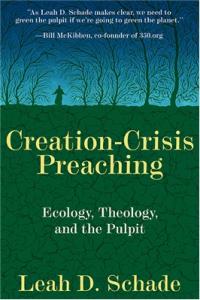
There are many other examples, and I’ve included links to other sermons below. You can also check out Earth and Word: Classic Sermons on Saving the Planet for more ideas. And my book, Creation-Crisis Preaching, also contains many sermons as well as the basic principles for how to preach a sermon on climate change as well as protecting water, protesting fracking, and cherishing Creation and those who care for it.
More sermons on climate change:
Resurrection Sermon for an Earth-kin Congregation
Noah’s Ark and Climate Change: What Kind of Church Will We Be?
Jonah, Ninevites, and Climate Change: EcoPreacher Guest Sermon
To see other EcoPreacher ideas and to sign up to receive future EcoPreacher 1-2-3 installments, click here.
10 Principles for Environmental Preaching: How to Craft Eco-Sermons
Clergy Report Preaching More about Climate Change: National Survey
Church Leaders Need Climate Ambition: Grassroots and Treetops
Climate Issues are Public Health Issues: Spotlight on Dr. Natasha DeJarnett
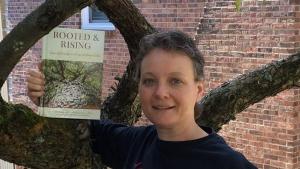
The Rev. Dr. Leah D. Schade is the Associate Professor of Preaching and Worship at Lexington Theological Seminary in Kentucky and ordained in the ELCA. Dr. Schade does not speak for LTS or the ELCA; her opinions are her own. She is the author of Preaching in the Purple Zone: Ministry in the Red-Blue Divide (Rowman & Littlefield, 2019) and Creation-Crisis Preaching: Ecology, Theology, and the Pulpit (Chalice Press, 2015). She is the co-editor of Rooted and Rising: Voices of Courage in a Time of Climate Crisis (Rowman & Littlefield, 2019). Her latest book, co-written with Jerry Sumney is Apocalypse When?: A Guide to Interpreting and Preaching Apocalyptic Texts (Wipf & Stock, 2020).




